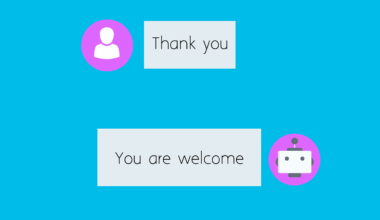How Prohibited Content Affects User Engagement
Prohibited content in social media refers to the material that violates community guidelines and legal standards. This can include hate speech, graphic violence, and misinformation, all of which impact user engagement profoundly. Users are less likely to interact with a platform rife with prohibited content due to a negative experience. Engagement metrics such as likes, shares, and comments can significantly drop. Advertisers also reevaluate their investments when platforms become associated with such content, emphasizing the importance of a healthy ecosystem. Additionally, quality content is more likely to generate positive interactions compared to offensive materials. When users consistently encounter prohibited content, they may abandon the platform altogether. Therefore, platforms actively monitor and regulate content to maintain user trust. This vigilance creates a safer environment, promoting higher engagement rates. In the long run, maintaining a strict social media policy regarding prohibited content is a win-win situation for both users and platform developers. Improved user experience leads to sustained growth and a happier community. Growth thrives on authentic interactions, and prohibited content disrupts this cycle necessitating monitoring.
The repercussions of prohibited content extend beyond the immediate impacts on engagement metrics and user trust. Social media platforms face considerable reputational risks when they fail to manage these issues effectively. When users encounter harmful material, they may take their grievances to public forums or media outlets, leading to negative publicity for the platform. This can result in financial repercussions as advertisers are drawn towards safer environments for their brands while users migrate away from perceived dangerous spaces. Consequently, a perceived lack of action against prohibited content can diminish user retention and hinder new users from joining the platform. Social media managers must understand these dynamics to develop effective strategies. They need to foster vibrant, inclusive communities while protecting brand integrity. Emphasizing engaging content creation and active moderation encourages user investment and loyalty. Collaboration with users to establish guidelines on what constitutes prohibited content often helps clarify expectations. Moreover, transparency in content moderation enhances credibility, as users appreciate open dialogue on the issue of banned materials. Platforms need to reassure users that they prioritize their safety, maintaining their engagement by fostering a community free from harmful materials.
The Influence of Moderation Policies
Moderation policies play a crucial role in shaping the user experience on social media platforms. Effective moderation guides user expectations for content quality and engagement behavior. When users notice diligent efforts to eliminate prohibited content, they are more likely to engage positively and frequently. In contrast, ineffective moderation can lead to frustration, diminishing trust towards the platform, ultimately driving users away. Strong, enforceable policies not only reduce the presence of harmful materials but also encourage users to participate in reporting mechanisms. This participatory approach can further empower users, prompting them to feel a sense of ownership and responsibility within the community. Furthermore, moderation policies should be clear and accessible to ensure users understand the rules governing content behavior. Open communication about policies can foster an environment where users feel safe sharing their voices. Platforms should frequently update users about changes in moderation protocols, highlighting their commitment to maintaining a safe space. In turn, this practice can lead to a more engaged user base aware of how to utilize the platform responsibly and effectively, invigorating community spirit.
Another vital aspect of managing prohibited content is the implementation of advanced technologies and artificial intelligence solutions. These tools help detect harmful material at scale, streamlining moderation efforts considerably. Currently, AI algorithms are capable of identifying patterns and flagging potentially prohibited content for human moderators to review. This dual approach enhances the efficiency of moderation while maintaining a personalized touch when it comes to sensitive subjects. However, reliance on automated systems cannot fully replace human oversight. Technology can at times misinterpret context or nuances within language, leading to mislabeling. Therefore, a hybrid approach combining AI and human moderation can yield the best results. Platforms should invest resources into refining their automated systems while training moderators on these technological tools. Furthermore, ongoing feedback and data collection from users can drive improvements and foster user trust. Engaging with the community about how automated systems function and the context behind flagging content openly can enhance transparency, ultimately leading to an environment that encourages engagement. Balancing technology and human interaction creates a more robust approach to content monitoring, ensuring a positive user experience across the board.
Long-term User Engagement Strategies
A key to sustaining user engagement is recognizing that moderation does not merely mean removing prohibited content but also promoting positive interactions. Encouraging diverse opinions and constructive conversations can create a vibrant platform atmosphere. Platforms may devise campaigns aimed at highlighting acceptable content types, fostering a sense of belonging among users. User-generated content campaigns are essential in driving this type of engagement, encouraging users to share material aligned with community standards. Promoting positive contributions is just as important as identifying and eliminating negative ones. Striking a balance fosters an environment where all voices have a platform, and users feel respected. Additionally, platforms should actively celebrate milestones and successes within the community, showcasing contributions that resonate with users. By doing so, participants see their efforts validated, leading to greater participation and loyalty. Cultivating an atmosphere of support and appreciation lays the groundwork for meaningful interactions. Moreover, regular user feedback sessions can provide insights into improving user experience while aligning with the community’s vision and goals effectively. By prioritizing positive user engagement, platforms can fortify their standing while reducing the chances of prohibited content surfacing.
User education regarding prohibited content is paramount in managing expectations and building a responsible community. Platforms should develop easily accessible materials that explain the community guidelines and the rationale behind them. This approach can lead to more informed users who understand what constitutes inappropriate behavior. Workshops, webinars, and tutorials can empower users to engage respectfully. By familiarizing users with the overall intent of policy enforcement, platforms can foster a safer environment for all. Effective user education can dramatically reduce instances of prohibited content appearing, leading to better overall engagement rates. Active-community-driven initiatives can also provide support by facilitating discussions surrounding complicated subjects. Furthermore, expanding user sensitivity to sensitive issues can mitigate misunderstandings, which sometimes leads to unintentional breaches of guidelines. Otherwise, platforms risk alienating users, primarily if they are penalized without proper education. Collaborating with advocacy organizations may also help in crafting content that resonates with users while also focusing on promoting diversity and respect. Ultimately, a well-educated user base will likely yield a more engaged and responsible community, free from harm and conducive to positive experiences.
The Role of Feedback Mechanisms
Feedback mechanisms serve as essential tools for assessing user sentiment regarding prohibited content policies. Platforms can draft surveys or conduct interviews to gather insights from their user base. Regularly seeking feedback helps identify potential areas for improvement while ensuring that users feel valued. This approach fosters a sense of agency among users and builds trust in the platform. Analyzing feedback trends can also help platform developers tweak guidelines and respond to emerging communication challenges. Transparency surrounding user feedback and subsequent actions strengthens community loyalty. Furthermore, establishing communication channels that allow users to have their voices heard creates an open environment. Combining user feedback with data analysis can lead to well-rounded decisions, promoting the betterment of the overall user experience. Regular updates based on user input allow members to contribute actively to community standards and practices. Ultimately, active listening translates into more effective moderation. By creating a partnership with users, platforms can successfully combat prohibited content while fostering meaningful engagement that provides a richer user experience in the long term.
In conclusion, effectively managing prohibited content on social media platforms is critical in fostering trust and maximizing user engagement. Platforms must take a multi-faceted approach that includes strong moderation policies, effective technology use, and user education to ensure a more engaging environment. Encouraging community participation in maintaining standards elevates the overall experience and allows users to take ownership of the process. Moreover, implementing feedback mechanisms helps platforms better understand their communities, making adjustments for ongoing improvement. As user engagement becomes increasingly vital to business success, prioritizing the creation of safe spaces free from prohibited content is essential. Unique interactions foster lasting connections, driving both user retention and growth. By balancing the moderation of harmful materials and promoting quality content, platforms can harness the power of their communities. The elimination of prohibited content can ultimately enhance user engagement, creating lasting relationships that thrive in a positive digital landscape. As social media networks continue to evolve, their ability to tackle these challenges will determine their long-term success and relevance.”





